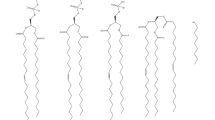Abstract
The purpose of this study was to assess the effect of intravascular ligand binding on parameter estimates derived from tracer kinetic modelling. To this end intravascular ligand kinetics between the free and a bound compartment in plasma and the exchange of tracer between the capillary space and tissue were analysed using a simple compartment model. The effect of non-equilibrated intravascular compartments on parameter estimates was evaluated in a computer simulation. It was found that three kinetic situations must be distinguished. If the intravascular compartments are fully equilibrated when the ligand reaches the target organ, intravascular binding simply acts as a scale factor for the transport-related parameterK 1. If the intravascular kinetics is very slow, only minimal binding will occur. In between there is a range where ongoing equilibration leads to time variability ofK 1. Since tracer kinetic modelling usually does not account for such time variability, the parameter estimates become biased, the degree of the bias depending on the intravascular binding kinetics. Furthermore the bias may be dependent on receptor density, meaning that model-derived receptor estimates are not linearly related to the true receptor density. It is concluded that intravascular ligand binding can severely affect parameter estimates derived from tracer kinetic modelling. Especially disturbing are effects due to ongoing intravascular equilibration following the arrival of the ligand in the target organ. These can be avoided by letting the ligand equilibrate with blood in a syringe prior to injection.
Similar content being viewed by others
References
Koeppe RA, Holthoff VA, Frey KA, Kilbourn MR, Kuhl DE. Compartmental analysis of [11C]flumazenil kinetics for the estimation of ligand transport rate and receptor distribution using positron emission tomography.J Cereb Blood Flow Metab 1991; 11: 735–744.
Koeppe RA, Frey KA, Mulholland GK, etal. (11C)tropanyl benzilate-binding to muscarinic cholinergic receptors: methodology and kinetic modeling alternatives.J Cereb Blood Flow Metab 1994; 14: 85–99.
Buck A, Wolpers HG, Hutchins GD, etal. Effect of carbon- llacetate recirculation on estimates of myocardial oxygen consumption by PET.J Nucl Med 1991; 32: 1950–1957.
Crone C. Permeability of capillaries in various organs as determined by the use of the indicator diffusion method.Acta Physiol Scand 1964; 58: 292–305.
Renkin EM. Transport of potassium-42 from blood to tissue in isolated mammalian skeletal muscles.Am J Physiol 1959; 197: 1205–1210.
Abi-Dargham A, Laruelle M, Seibyl J, etal. SPELT measurement of benzodiazepine receptors in human brain with iodine-123-iomazenil: kinetic and equilibrium paradigms.J Nucl Med 1994; 35: 228–238.
Author information
Authors and Affiliations
Rights and permissions
About this article
Cite this article
Buck, A., Burger, C. Effect of intravascular ligand binding on parameter estimates derived from tracer kinetic modelling. Eur J Nucl Med 23, 422–430 (1996). https://doi.org/10.1007/BF01247371
Received:
Revised:
Issue Date:
DOI: https://doi.org/10.1007/BF01247371




